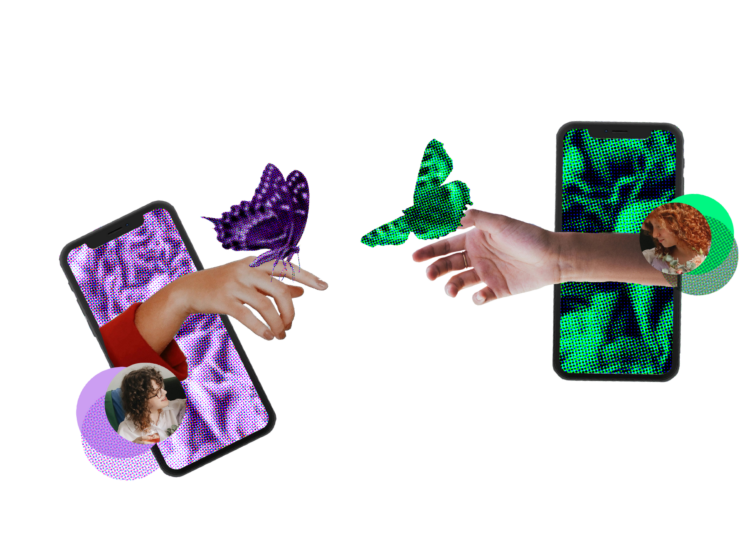
At Superbloom, clients often are curious about audience and how to reach people beyond the usual suspect for an app or tool. Most recently, we were approached by a client who asked a vital question with real implications: How can our tool and brand better appeal to marginalized genders and identities? It’s a question more organizations should be asking — especially those building tools meant to empower or protect users, such as privacy-focused software. But as simple as the question sounds, answering it—and acting on it—requires a deliberate, often uncomfortable reckoning.
Before we could begin designing for inclusion we needed to address a foundational issue we encounter often in the tech world: many tools are originally built for majority audiences—most commonly, men with a high degree of technical fluency. Unsurprisingly, this history shapes everything: product features, tone, visual language, even how user trust is earned. When these systems attempt to pivot toward inclusion without reevaluating their assumptions or defining their strategy clearly, they often fall short. That’s because diversity can’t be retrofitted around a default — and certainly not when that default is exclusionary from the start.
The fallacy of “broad appeal”
Time and time again, we hear clients say: “We just want to appeal more broadly.” While well-intentioned, this type of wishful thinking is ultimately ineffective and even risky. Without specificity, efforts to engage with marginalized genders and identities tend to default into the vague—and the vague is almost always a re-centering of the dominant group.
Take, for example, the vague catch-all term “marginalized genders.” Too often, this label is treated as an umbrella that includes “everyone who isn’t a tech-bro,” a definition that over-simplifies, erases nuance, and reinforces the norms marginalized individuals are already pushing against. Worse still, it sustains harmful hierarchies by positioning those users as deviations from the imagined “typical” user — male, cisgender, and highly technical.
Effective, respectful design begins with clarity. Who are we really talking about? Which identities, lived experiences, and cultural contexts are we centering? What does trust look like for them? What past harms must we be mindful not to repeat?
Why this process is hard — and necessary
Clarifying these definitions isn’t just a semantic exercise; it can be organizationally and emotionally uncomfortable. It requires brands to step out of autopilot mode — to challenge internal assumptions and recognize gaps in team knowledge, systems, and design approaches. It can bring teams face-to-face with blind spots they didn’t know they had.
For our client, this process can mean shifting from a broad, undefined concern about diversity to a deeper interrogation: Who exactly are we doing this for?
To guide our user research and shape our design direction, we collaboratively defined what we meant when we spoke of gender diversity. Not a monolith — but a spectrum of experiences, sensibilities, and social contexts that deserved acknowledgment in specifics.
![]()
Our working definition of gender-diverse users
To design with intention and empathy, we developed the following working definition for our team:
Who we mean by gender diverse
Individuals who identify as:
- Femme-presenting
- Man (not cisgender)
- Woman (cis and trans)
- Transgender
- Non-binary
- Gender-fluid
- Gender-queer
- Androgyne
They have often experienced:
- Discrimination, exclusion, and “othering”
- A lack of visible role models
- Misrepresentation in technology and media
- Hate or backlash from groups like incels
- The need to mask or hide their identities
They’ve also found strength in:
- Community (online and offline)
- Inclusive spaces
- Activism, collaboration, and mutual support
- Strong social networks and alternative structures of connection
Their behavior around privacy tools varies:
- Some use them actively
- Some wish to but haven’t started
- Some avoid them intentionally
- Some choose not to for personal or systemic reasons
Understanding this range allowed us to pinpoint whom we should prioritize in research, how to create inclusive design strategies, and how to avoid tokenism or generalizations . Without such grounding, there’s too great a risk of flattening experiences and missing the point entirely.
![]()
Why definitions make brands stronger — not weaker
It’s natural to fear that narrowing your scope will limit your reach. But from Superbloom’s experience, the opposite is true: By meeting a specific community with specificity, you demonstrate integrity, depth, and real commitment.
Brands that say “we welcome everyone” but sidestep the hard work of clearly defining who everyone means often foster exclusion by default. A vague welcome is no welcome at all. And in industries where gender-diverse individuals have historically been pushed out or ignored, this approach feels like more of the same.
When brands get intentional about speaking directly to historically marginalized users, they don’t exclude the majority users—they just stop over-prioritizing them. They stop designing only for one type of user and instead allow room for multiple histories, values, and ways of connecting.
The takeaway
Designing for marginalized genders and identities is not about checking a box. It’s about stretching your organization’s values to meet the real diversity of lived experience with clarity and respect. The first step? Say what you mean. Define who you’re designing for, and involve them meaningfully. Yes, it might force some uncomfortable conversations. But it will spark the kind of growth that makes your product—and your brand—more relevant, more just, and more human.
Want to learn more about how to create truly inclusive, user-centered design strategies? We’d love to talk! Get in touch: [email protected].
Credits
With thanks to Open Technology Fund Impact & Engagement Lab (formerly Learning lab) for supporting this work.